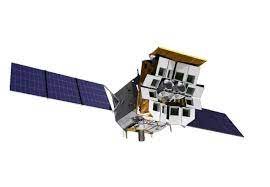
China has propelled a groundbreaking astronomical satellite resembling a lotus flower into space. The “Einstein Probe” (EP), launched from the Xichang Satellite Launch Centre, aims to observe enigmatic transient phenomena in the universe, capturing moments akin to celestial fireworks.
Weighing about 1.45 tonnes, with a size comparable to a full-size SUV, the lotus-shaped satellite boasts a unique design with 12 petals and two stamens. These components house wide-field X-ray telescopes (WXT) and follow-up X-ray telescopes (FXT), forming an advanced space observatory.
The satellite’s technology, inspired by a lobster’s eye, utilizes innovative X-ray detection methods. It embarks on a scientific mission to capture the first light emerging from supernova explosions, detect X-ray signals associated with gravitational wave occurrences, and uncover dormant black holes and faint celestial entities across the universe.
Yuan Weimin, principal investigator of the EP mission at the National Astronomical Observatories of the Chinese Academy of Sciences (CAS), highlighted the mission’s significance. He emphasized how the universe, despite appearing serene to the human eye, hosts vigorous celestial activities such as explosive events triggered by dying supermassive stars, collisions between neutron stars and black holes, and the devouring nature of black holes.
X-ray emissions from these explosive phenomena, inaccessible to Earth’s atmosphere, remain concealed until probes like the EP venture into space. Scientists express the challenge in studying these transient sources, comparing it to fishing in a vast river where predicting the source’s origin is complex.
The satellite’s WXT acts as a substantial tool, scanning one-twelfth of the sky at a time, capturing unexpected celestial events. The FXT, with high sensitivity, not only conducts rapid follow-up observations but also autonomously identifies explosive sources.
Additionally, the EP carries innovative CMOS sensors for X-ray observations, showcasing groundbreaking advancements in X-ray astronomical detection. Collaborating with the European Space Agency and the Max Planck Institute for Extraterrestrial Physics, the mission aims to conduct extensive surveys of high-energy transient sources and delve into the formation and evolution of cloaked black holes.
Yuan expressed anticipation in unveiling never-before-seen celestial phenomena, underscoring the mission’s potential to unravel profound cosmic mysteries. The EP’s ambitious objectives encompass probing gravitational wave-associated X-ray signals and investigating neutron stars, white dwarfs, supernovae, and gamma-ray bursts.
As the EP embarks on its mission to explore the cosmos, scientists remain eager to witness and comprehend the unexplored phenomena that lie within the depths of the universe.
Sources BY Agencies

